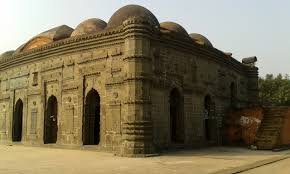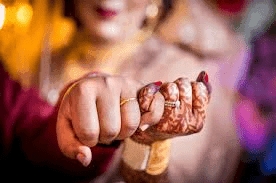Bangladesh, with its enriching culture and heritage, has evolved with an identity deep-seated in Islamic tradition. From the arrival of Islam on this land to architectural masterpieces and spiritual traditions, the reflection of Islam can be found everywhere. The present paper unveils the background, cultural significance, and architectural wonders that define the Islamic heritage of Bangladesh and provides an extensive look at how this heritage has molded the identity of the nation.
The Arrival of Islam in Bengal
The Islamic heritage in Bangladesh starts with the advent of the religion in Bengal, believed to have been in the 8th century. Arab traders and Sufis were key agents in the dissemination of the message of Islam. Their peaceful and pious character made Islam attractive to the local population, which slowly found acceptance and integration into the life and social order of the inhabitants of Bengal.
- Arab Traders and Islamization of the region
The sea trading of the Arabian Peninsula to the southern and south-eastern parts of Asia cascaded through to the bay of Bengal. It was not only the product that was exchanged; the Arab traders were accompanied by their faith. The sincerity of the traders, and the system’s non-discriminatory drive, attracted the masses to allow the religion to scope through their lives.
- Sufi Saints and Their Influence
Sufi saints had a pivotal role in upholding the spread of Islam in Bengal. Icons such as Hazrat Shah Jalal of Sylhet and Hazrat Khan Jahan Ali of Bagerhat spread Islam through the medium of their teachings and piety. Their form of love, forbearance, and spiritual guidance attracted major followings, which later served to further dare Islamic mores into the very fabric of Bengali society.
- The Delhi Sultanate Period
The political establishment of the Delhi Sultanate in Bengal in the 13th century did prove, in fact, to be a real watershed event for Islam in this region. Encouraging the spread of Islam, the Sultans built mosques, madrasas, and other buildings that established the Muslim presence in Bengal.
Islamic Architecture in Bangladesh
Bangladeshi Islamic architecture is one of its most outstanding features, drawing a picture artistically and culturally of the place that has Islam as an influence. From ancient mosques and shrines, these architectures bear great history in their development concerning the art and architecture of Islam in the country.
- The Sixty Dome Mosque

The Sixty Dome Mosque is located in Bagerhat and is said to be one of the best structures of Muslim architecture in Bangladesh. It was built in the 15th century by Khan Jahan Ali, and the excellent collection of domes and the ornamental design on the terracotta make this mosque a UNESCO World Heritage site.
- Star Mosque

Star or Tara Masjid, which is popularly known as the Star Mosque, is one of the century-old monuments of Mughal architecture located in Dhaka. The mosque is adorned with intricate motifs of stars and other objects popularly made from broken pieces of chinaware that shine in the sun. These artistic works have given the mosque its name and made it a place of attraction for not only the local population but also people from other areas.
- The Lalbagh Fort Mosque

The Lalbagh Fort Mosque is another epitome of Islamic architecture, within the greater Lalbagh Fort complex, Dhaka. On architectural study, the Lalbagh Fort Mosque, belonging to the Mughal period, presents structures having three domes and an artistic view of a prayer hall, typical of the architecture of this period.
- The Choto Sona Mosque

Built with exquisite design out of gold color in bricks, the Choto Sona Mosque, or Small Golden Mosque to be in the Chapai Nawabganj district holds well to have been constructed in the 15th century as a beautiful emblem to the architectural brilliance of the Sultanate period.
The Influence of Islamic Culture on Bengali Society
Islamic heritage in Bangladesh is not only witnessed in architecture but also has layered the culture and the social fabric. From language and literature to festivals and everyday practices, Islamic culture ties with Bengali customs to come up with a unique blend that defines the identity of the nation.
- Language and Literary Effect
Significantly, with the introduction of the Persian, Arabic, and Urdu languages through Islamic rule, Bengali literature received a great impact. Themes and motifs relating to Islamic life entered Bengali poetry and prose works, with lots of them echoing the spirituality and morality of Islam. The influence of Sufi literature, in particular, left a lasting impact on Bengali literary traditions.
- Islamic Festivals in Bangladesh
All the Islamic festivals, known as Eid-ul-Fitr and Eid-ul-Adha, are celebrated here with great enthusiasm throughout Bangladesh. These festivals, marked with congregational prayers, feasts, and acts of charity, have served as an expression for developing a sense of brotherhood and oneness among individuals. Another important part of the Islamic cultural heritage in Bangladesh is the observance of Ramadan.
All through history, Islamic education has been the mainstay of cultural life in Bangladesh. The role of educating the teeming population, in the customs and teachings associated with Islam, lies so far with the traditional and modern madrasas. This tremendous spread of Islamic education has led to the preservation of religious scholarship and social cohesion within the country.
- The Role of Islamic Dress and Customs
For example, in Bangladesh, Islamic customs and dress codes, like the wearing of hijabs by women and modesty in attire, are in wide practice. Those customs reflect the infusion of Islamic values into the quidian existence of the people.
Preservation of Islamic Heritage
Bangladesh’s conservation of Islamic heritage is a shared effort among government, local communities, and international bodies toward the preservation of the heritage. Safekeeping historical sites and their restoration, promotion of Islamic culture, and installing the idea of heritage in young minds are much needed for the heritage to be sustainable.
- Historical Site Restorations
Many of the architectural reveals from Islamic Bangladesh have been retained to return their old splendor. In these, organizations like UNESCO and Archaeology Department of Bangladesh have played a pivotal role, ensuring the generations to come would appreciate their country’s rich Islamic heritage.
- Cultural Promotion and Awareness
Cultural organizations and educational institutions are playing prominent roles in creating awareness regarding the Islamic heritage of Bangladesh. Through seminars, exhibitions, and educational programs, organizations of such nature continue to keep alive the legacy of Islamic culture.
- Role of Islamic Art and Calligraphy
This is still an art that has been preserved by artists and professionals, and the country is a holder of such rich Islamic calligraphic art. Most of the important buildings that house various Islamic buildings in the country still boast these marvelous designs, speak of a rich culture left behind by the predecessors.
- Challenges and the Way Forward
Although there have been some steps taken towards the preservation of this heritage, nevertheless, urbanization, carelessness, and a lack of funds have been serious threats to this historic monument. It is about time that all concerned individuals work together, so that the Islamic heritage of Bangladesh can be preserved.
Finally
Starting from the arrival of Islam in the region to the great architectural pieces that dot the landscape, there are influences of Islam throughout the structure of Bangladesh. But it is not a duty to preserve and celebrate such heritage; it is about paying respect to the forebearers and an inspiration for generations yet to come. Of the numerous changes that Bangladesh is going through, its Islamic heritage is a sure sign of a lasting legacy that helped to determine the country’s development.






